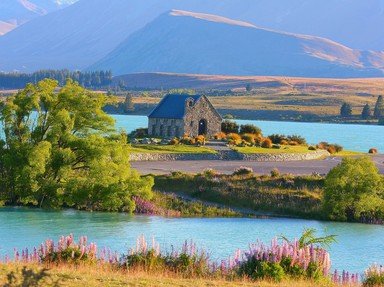Quiz Answer Key and Fun Facts
1. Auckland was first settled in about 1350 by Maori people who called it Tamaki Makau Rau, which means "land of a thousand lovers". Which of the following is NOT a reason the Maori settled in the area?
2. Who fought in the Battle of Moremonui in the early 19th century?
3. Auckland became the capital of the British colony of New Zealand after the signing of which treaty in 1840?
4. Which of the following is a reason the New Zealand capital was moved from Auckland to Wellington?
5. Auckland's Great South Road, which began construction in 1861, was built for what purpose?
6. What, to the readers of the "Daily Southern Cross" in 1875, was Kaskowiski?
7. In what New Zealand city did the 1913 Great Strike begin in before it spread to Auckland?
8. Auckland was invaded by the Japanese during World War II.
9. What is the name of the Greenpeace ship that was bombed in Auckland Harbor on July 10, 1985?
10. Which iconic Auckland building opened on August 3, 1997 and was the tallest freestanding structure in the Southern Hemisphere at the time?
Source: Author
Joepetz
This quiz was reviewed by FunTrivia editor
gtho4 before going online.
Any errors found in FunTrivia content are routinely corrected through our feedback system.

